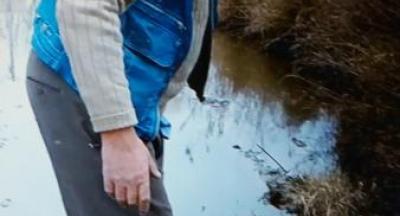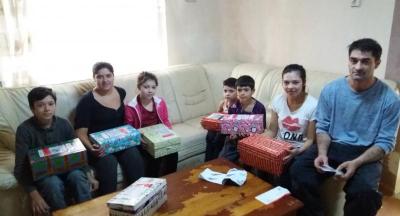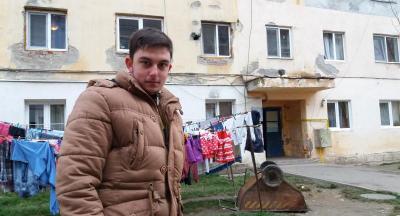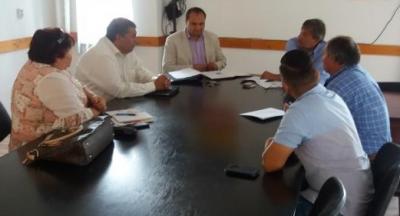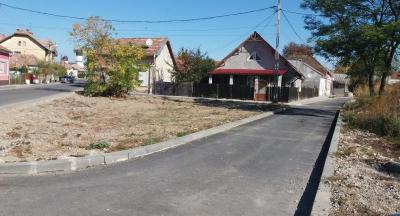Ocna Mures
*Disclaimer: The information and views set out in this page do not necessarily reflect the official opinion of the Council of Europe and/or the European Commission. Neither the Council of Europe, the European Commission nor any person acting on their behalf may be held responsible for the use which may be made of the information contained therein.
Last update: 12/01/2017
Ocna Mures is a town from Alba County, Romania. Located in the north-eastern corner of the county, near the Mureș River, the city has a population of 13.036 inhabitants, from which Romanians - 78,14%, Hungarians - 8.75%, Roma - 6.59%. The town administers five villages: Cisteiu de Mures, Micoslaca, Razboieni-Cetate, Uioara de Jos and Uioara de Sus.
Ocna Mures is known to the large public as a mine city with extraction of salt and soda, and also for its balneal facilities area. As a historical mine city, most of the industry/economy and budget was build up and rely on the revenues that the two large factories (salt mine and soda mine) used to provide to the local budget.
In 2009, after many attempts to survive, both factories collapsed and, as a result, more than 3.000 people become unemployed.
Roma communities in Ocna Mures
There are 4 major Roma communities in Ocna-Mures: Colonie (houses built by the factories for the mine workers), Uioara (flats plus the houses settlements), Ciunga (Roma settlement) and Alexandru Titrus community (Macilor, Abatorului and Al. Titrus Streets).
Most of the Roma people with capacity to work are either unemployed (150), either leave from social assistance (200). Approx. 100 Roma left the city and live in the Western Europe. Some others have no occupation, but they work occasionally for unqualified jobs as daily workers (approx. 50 persons).
Most of the children go to kindergarten or public schools. Unfortunately, the rate of school dropout is very high (over 25% drop out before graduating the elementary school, 40% drop out after completing the elementary school). Only 10 % go to a high school and only 10% of them complete the high school. 2% of the Roma go to University and manage to graduate.
Other major problems are: bad/lack of infrastructure (roads in bad shape, lack of water, gas, and electricity), employment, property documents and need of social houses.
The ROMACT Process
ROMACT process started on September 2016. The Community Action Group (CAG) identified some of the short/medium/long-term needs and measures:
| Priorities | Objective 1 | Objective 2 |
|---|---|---|
| Education | Prevent drop-out in kindergarten and school (very high rate) | Develop Second chance and School after school programs |
| Health | Reduce the lack of interest from the medical staff to work in Roma communities | Organize regularly vaccination and early marriages prevention campaigns |
| Infrastructure | Create better roads in Roma community | Connect each house to water/sewerage |
| Other | Provide identity and property documents | Build social houses for people with no/low income |
Several trainings were also provided:
Trainings/expertise provided for the local administration:
Applying for European Structural Funds
Training course on EU funds access expert
Elaboration of the JAP
Activities involving the community action group:
Training on community development and civic participation
Training on Public administration functioning
Education campaign – second chance/ school after school programs
So far, the following measures to solve problems in Roma community were taken:
The facilitator and CAG members mediated a solution with the local administration for the Roma people who live in Colonie settlement and were in great danger of eviction. The municipality identified 4 social houses and provided to the Roma people. Two of those houses needed some repairs before being used.
The sewerage system and gravel road was rehabilitated in George Cosbuc Street, and the road is now covered with asphalt. The funds for these projects were provided by the municipality. The main beneficiaries of the project were 20 Roma people, but also some Romanians (10 people) who live on the same street. The budget that was allocated for these activities was 400.000 Euro.
The local administration organized education campaigns in the Roma community, to encourage Roma children and adults to go back to school (by the state program "Second chance“). As a result, 8 Roma children and 4 adults were registered to the program and followed the "second chance school".
| Actions | Beneficiaries | Budget | Status |
|---|---|---|---|
| Rehabilitation of the sewerage system and gravel road | 1.000 | 400.000 euro | Process finished |
| Support to the CECOM Day Care Center | 17 | 10.000 euro | Process finished |
| Rehabilitating 4 social houses | 20 | Process ongoing |

